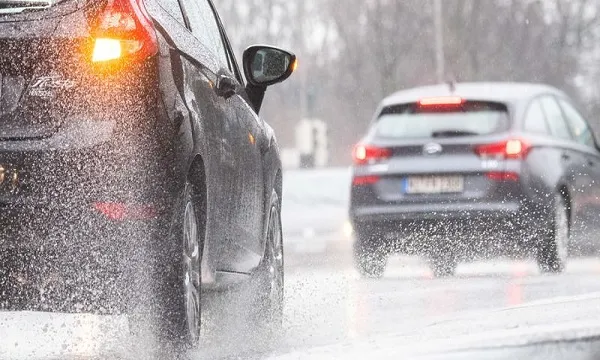Tips for driving in the rain: how to stay safe on wet roads
According to a UK research, in 2016 1 out of 9 in all road deaths was caused due to poor weather conditions, specifically due to not slowing down on wet roads.
Wet roads and driving in the rain can be extremely dangerous even for the most skilled driver. Due to the reduced visibility and the risk of hydroplaning it is crucial that every driver knows what they should do when driving in the rain, what the most common issues they might face are and how to handle and prevent them.
Car Maintenance for Rainy Weather
If you find yourself stuck driving in heavy rain with a car issue that needs to be checked, you should never be caught unprepared. Proper car maintenance is vital to make sure your vehicle is safe to travel on less then optimal weather. Before leaving, you should always make sure your car is in perfect shape and ready to face the wet roads.
Whilst you’re on the road, if your car stops or breaks down for an unknown reason and needs to be checked immediately, you should always have the location of a trusted service centre. Knowing where to go for help in case of a car malfunction can provide a peace of mind when travelling and quick assistance.
Key issues when driving in the rain
To ensure safety when driving in the rain, it is important to know the most common issues you might face in stormy weather. The weather can change from bright sunshine to rain in a matter of seconds, so it's best to be prepared.
Generally, when driving in the rain, the main issues are compromised visibility and wet, slippery roads. These key factors could ultimately lead to an accident, as all other drivers will be faced with the same challenges. Therefore, the most important thing to do when driving in the rain is to be careful when driving in rain and to stop if deemed necessary.
Checking Wiper Blades
Your most trusted companion when driving in heavy rain is undoubtedly your wiper blades. These are essential for ensuring you can see the full extent of the road, even during a downpour, which is why they should always be checked if you are expecting rain.
Common problems with wiper blades include them not moving properly due to a failed wiper motor, which can impair your visibility. It is advisable to always check that the fluid is correctly spraying from the nozzles, as wiper blade fluid can sometimes get stuck due to clogged nozzles or can simply be missing due to an empty reservoir. Wiper blades can also become torn or deteriorated due to poor car maintenance or simply over time; in this case, you will notice smearing or shuttering blades. Regularly inspecting and maintaining your wiper blades is crucial for safe driving in rainy conditions. In general, it’s advisable to change wiper blades every 6-12 months.
Inspecting Brake System
Bad weather conditions can impact the brake system in ways that might damage your vehicle and put you at risk. For example, moisture from driving in the rain can enter the brake system, specifically the area between the brake rotors and pads, which, if not removed promptly, could lead to rusting.
Moisture can cause several more issues; when driving on wet roads, moisture and rust can prevent you from braking quickly by reducing the friction between brake pads and rotors. This issue could result in not being able to stop when necessary, making your vehicle a danger to you and the rest of the road users. Proper maintenance and preventive measures are essential to ensure your brake system remains effective in all weather conditions.
Essential Tips for Driving in Rain
There is no “how to drive in heavy rain guide”, however being prepared for wet weather conditions is essential, especially in the UK, where it rains 133 days out of 365. When you find yourself driving in rain or during a heavy storm, you should always adjust your speed. In harsh weather conditions, it is very easy to lose control, even for the most experienced driver. Driving slower will reduce your chances of swerving outside your lane and help maintain control.
As mentioned above, humidity can damage brakes and reduce their effectiveness, which is why, especially in the rain, you should always leave more space between your car and the vehicle in front of you to allow for longer braking distances.
Finally, the most important advice of all is to regulate your speed and stop if you are driving under very heavy rain that is making it unsafe for you to continue.
